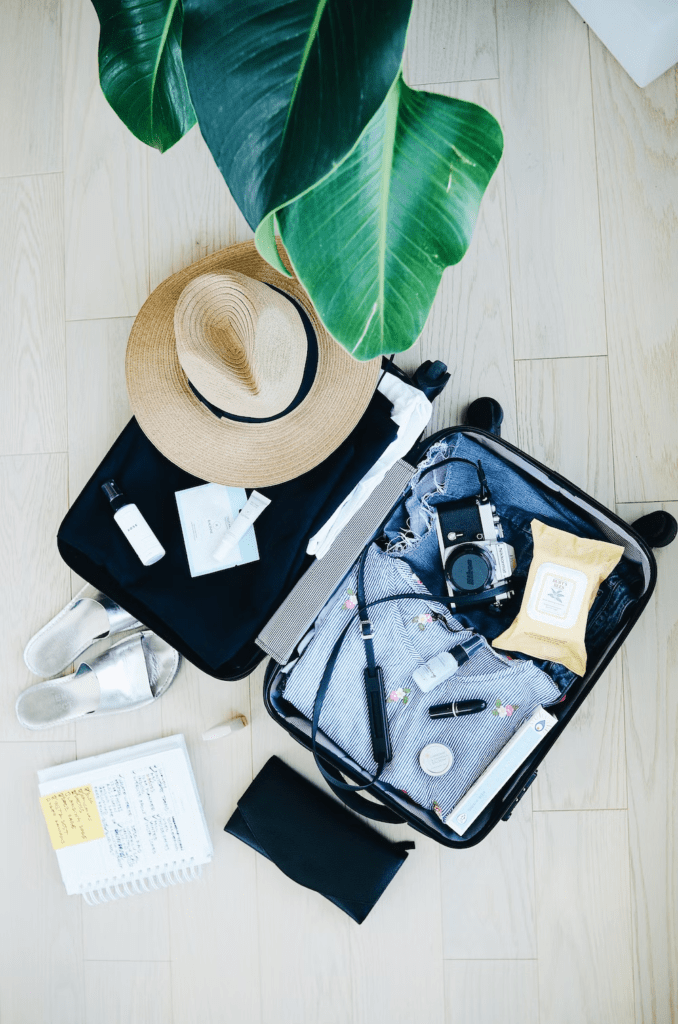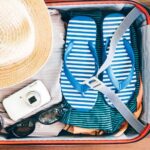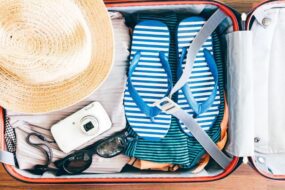

Traveling is an exciting and rewarding experience, but it can also be stressful, especially when it comes to packing. Packing light is essential for a stress-free travel experience. It makes it easier to carry your luggage, saves you money on baggage fees, and gives you more flexibility to explore your destination.
In this blog post, we will share some tips on how to pack light and smart for any adventure and also provide a packing list that you can use as a reference. Whether you are planning a short weekend getaway or an extended trip around the world, these tricks will help you pack efficiently and avoid overpacking.
Why Pack Light?

There are many benefits to packing light. Here are just a few:
- Easier to carry: When you pack light, your luggage is easier to carry and maneuver. This is especially important if you are traveling to a destination with a lot of stairs or cobblestone streets.
- Saves money: Most airlines charge baggage fees, so packing light can save you money.
- More flexibility: When you pack light, you are more flexible to explore your destination. You can easily change your plans and go where the day takes you.
- Less stress: Packing light can help to reduce stress. When you don’t have to worry about overpacking, you can focus on enjoying your trip.
How to Pack Light and Smart


Here are some tips on how to pack light and smart for any adventure:
- Plan your outfits: Before you start packing, take some time to plan your outfits. This will help you avoid overpacking. Consider the activities you will be doing and the weather conditions at your destination.
- Pack versatile pieces: Choose clothing items that can be mixed and matched. This will help you create multiple outfits with a few pieces of clothing.
- Roll your clothes: Rolling your clothes instead of folding them will save space in your luggage.
- Use packing cubes: Packing cubes are a great way to organize your belongings. They help to keep your luggage neat and tidy, and they make it easy to find what you need.
- Leave non-essentials at home: If you can, leave non-essential items at home. This includes things like books, hairdryers, and irons. You can usually buy these items at your destination, or you can do without them altogether.
- Bring a carry-on bag: If possible, try to bring only a carry-on bag. This will save you time and money, and it will make it easier to navigate through airports and train stations.
Packing List


Here is a basic packing list that you can use as a reference:
Clothing:
- Tops: T-shirts, tank tops, long-sleeved shirts, sweater or jacket.
- Bottoms: Pants, shorts, skirt.
- Shoes: Comfortable walking shoes, sandals or flip-flop.
- Swimsuit: If you are planning on swimming, bring a swimsuit.
Toiletries:
- Toiletries: Toothbrush, toothpaste, soap, shampoo, conditioner, deodorant, razor, shaving cream
- Medications: Any medications you take regularly.
Other essentials:
- Passport and travel documents: Make sure you have your passport and any other travel documents you need.
- Money: Bring a mix of cash, credit cards, and debit cards.
- Electronics: Phone, charger, camera, headphones
- Journal: A journal is a great way to document your travels.
- Reusable water bottle: This will help you stay hydrated and save money on bottled water.
Additional Tips:


Here are some additional tips for packing light and smart:
- Do your research: Before you start packing, do some research on your destination. This will help you pack the right clothing and gear.
- Be flexible: Be prepared to make adjustments to your packing list based on the weather and activities you will be doing.
- Don’t overpack: It is always better to underpack than overpack. You can always buy things you need at your destination.
- Leave room for souvenirs: You may want to buy some souvenirs on your trip, so leave some room in your luggage for them.
CONCLUSION:
Packing light and smart is essential for a stress-free and enjoyable travel experience. By following the tips in this blog post, you can pack efficiently and avoid overpacking. Remember to plan your outfits, pack versatile pieces, roll your clothes, use packing cubes, leave non-essentials at home, and bring a carry-on bag whenever possible. With a little planning, you can pack everything you need for your adventure without breaking the bank.
Hope this blog post has been helpful. If you have any questions, please feel free to leave a comment below.
Happy travels!
FREQUENTLY ASKED QUESTIONS:
Q: Why should I pack light?
A: There are many benefits to packing light, including:
- Easier to carry
- Saves money on baggage fees
- More flexibility to explore your destination
- Less stress
Q: How can I plan my outfits to avoid overpacking?
A: Before you start packing, take some time to plan your outfits. Consider the activities you will be doing and the weather conditions at your destination. This will help you avoid packing clothes that you won’t need.
Q: What are some versatile pieces of clothing that I can pack?
A: Versatile clothing items can be mixed and matched to create multiple outfits. Some examples of versatile pieces include:
- T-shirts
- Tank tops
- Long-sleeved shirts
- Jeans
- Shorts
- Skirts
Q: How can I save space in my luggage by rolling my clothes?
A: Rolling your clothes instead of folding them will save space in your luggage. Rolled clothes also tend to wrinkle less than folded clothes.
Q: What are packing cubes and how can I use them to organize my belongings?
A: Packing cubes are small, rectangular bags that can be used to organize your belongings. They come in a variety of sizes and can be used to pack clothes, toiletries, and other items. Packing cubes help to keep your luggage neat and tidy, and they make it easy to find what you need.
Q: What are some non-essential items that I can leave at home?
A: Some non-essential items that you can leave at home include:
- Books
- Hairdryers
- Irons
- Extra toiletries
You can usually buy these items at your destination, or you can do without them altogether.
Q: What are some benefits of bringing a carry-on bag?
A: There are many benefits of bringing a carry-on bag, including:
- No baggage fees
- Easier to maneuver
- More flexibility to change your plans
Q: What are some additional tips for packing light and smart?
A: Here are some additional tips for packing light and smart:
- Do your research on your destination before you start packing.
- Be flexible with your packing list.
- Pack light and leave room for souvenirs.
- Use a packing list to help you stay organized.










